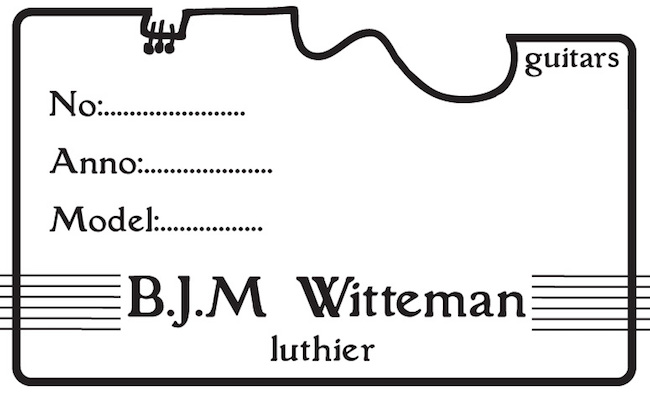Ladybird
The ladybird dreadnought model
By combining the advantages of the smaller (000) guitar model with the extra qualities of the dreadnought model, I have come to my ladybird dreadnought creation. The model in this photo is made of mahogany with a redwood top. This leads to a broad tonal spectrum and long sustain. This guitar is ideal for fingerpicking but is also recommended for classical guitarists who also like to play a steel string. Beautiful warm sound!


The slim waist ladybird model
For this model I was inspired by the guitar of Joan Baez, Martin 0-45JB Joan Baez Limited Edition 1998. The guitar has a beautiful abalone inlay and therefore has a very distinguished appearance. The belly of the guitar body is the main acoustic part for generating and amplifying the tone generated by the top. In my model I narrowed the waist a bit to streamline the tones from the belly to the sound hole. Moreover, this also turned out to be an improvement in design and playability. This guitar is built with an Adirondack top and quarter sawn Bubinga back and sides. Of course, I completed this model with a beautiful abalone inlay in the top and fingerboard. This guitar is not only a feast for the eyes but also has a beautiful and harmonious clear sound and is very easy to play. Ideal for finger picking and stage performance!
The philosophy behind the ladybird model
Normally, these smaller guitar models have less volume. By adjusting this guitar model on some points, I have managed to improve the bass section to guaranty a full tonal spectrum and a better harmony.
- The elevated fingerboard: as a result the strings intersect the top contact at an angle, as they do with the soundboard of a harp; a modulation that has been successfully described and applied by the respected Thomas Humphrey, luthier. The increased angle between strings and top results in an increased tractive force to the soundboard and body making it sound louder and brighter.
- In the normal situation the fingerboard meets the body at the 12th fret. In the Ladybird models the fuse between body and neck is made at the 14th fret with a longer playable fingerboard as a result.
- I applied my balsa body construction in this guitar model, so that the sound is directed more forward and is somewhat louder (see my chapter on guitar construction).
- I also made the body a little deeper and extended the scale length to 63,5 cm without compromising playability.
